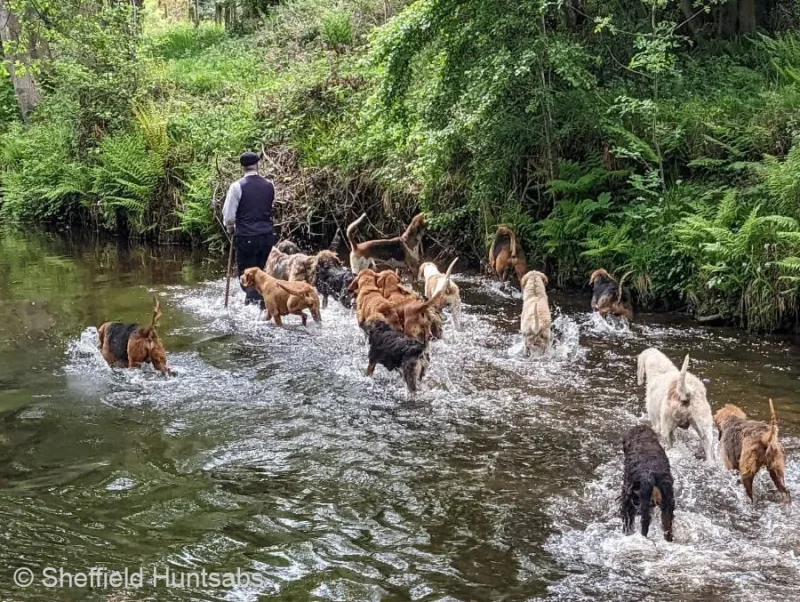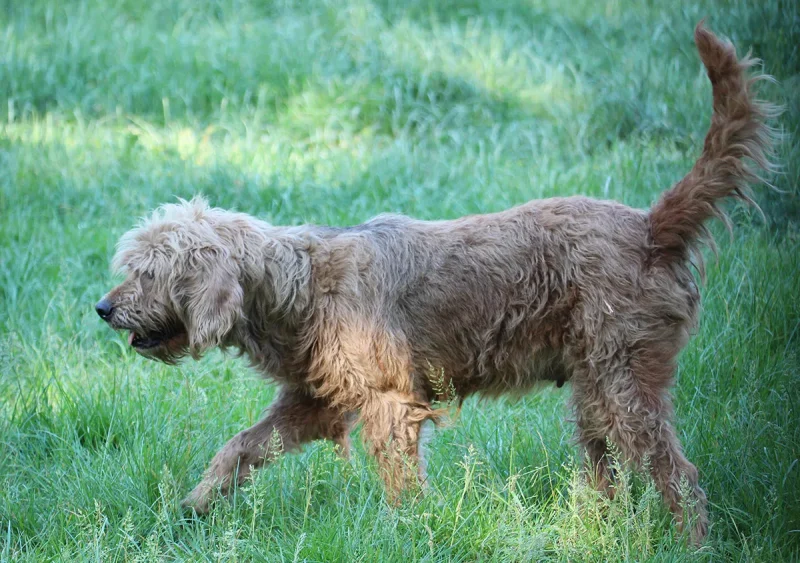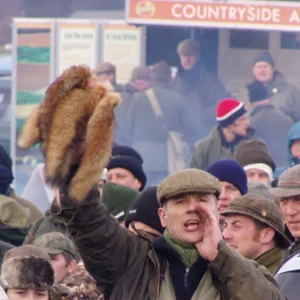The North American species was imported to Britain in 1929 to be kept in fur farms. However, many were deliberately released by the owners during fluctuations in the fur trade, and many also escaped. Mink were first recorded as breeding in the wild in 1956 on the River Teign in Devon and have since spread to many parts of the country. Mink are now firmly established in Britain’s rivers.
Mink hunting is a relatively new ‘sport’ in the UK. Following a ban on otter hunting in 1978 when otters received full legal protection in England and Wales because of their precipitous decline, otterhound packs switched to hunting mink. Prior to the Hunting Act, which made mink hunting illegal, the 20 mink hunts killed between 400 and 1,400 mink annually.
How does mink hunting with dogs work?
Mink are hunted along rivers and streams by packs of mink hounds and followers on foot. The hounds and followers pursue the mink’s scent as it runs along the riverbank in a desperate bid to escape. Some mink climb trees to flee their pursuers.

The mink hunting season lasts from April until early October as no other time will suit this ‘sport’, because the cold water of early spring, winter, or autumn, will chill and cramp hounds to a dangerous degree. But while the warmth of summer is necessary to heat the water sufficiently, the rays of the mid-day sun are inimical to the scent; usually, therefore, the hunting is over by mid-morning.
Mink hunting also causes major disturbances to habitats suitable for otters and other riverside wildlife. It has also been shown to be detrimental to the recovering otter population.
Otterhounds / Minkhounds

The original otterhound has been partially described as a descendant of the old southern hound crossed with the wire-haired Scotch terrier, and probably with the water-spaniel. His nose is very good, which is required to track the cold scent of the otter mink, and to follow him in the water. Pure foxhounds had been used by a couple of otter packs, and they will hunt whatever they are entered to, but they are too fast on land, and not a sufficiently good swimmer in the water, nor capable of bearing that element for so long a period as the otterhound / minkhound, whose greasy and woolly coat is impenetrable to the wet.
Mink
The mink is solitary and highly territorial – an individual defending about a mile of river. They are semi-aquatic and feed on fish, birds, small mammals, frogs, toads, snails and insects. They only visit a neighbouring mink’s territory to mate – the female producing four to six young in April or May in a hole in a bank or hollow tree.
Despite sensationalist stories in the press about ‘plagues of mink’, the mink’s solitary nature and territorial behaviour means that the only time several mink can be seen together is when a mother still has her dependent young with her. Some landowners have trapped dozens of mink at the same place during a year but research shows that they are almost certainly itinerant mink travelling through the territory in search of one of their own. Although large numbers of mink may be trapped this way it has little effect on the local population density.
Domestic ducks and poultry may be lost to mink if inadequately protected. However, considerable research of mink in the wild has been conducted by Dr John Birks of the Nature Conservancy Council (now English Nature). He has reported, “The mink is a territorial species, and the removal of territory holders by localised trapping merely attracts those itinerant individuals seeking territories into the vacant areas created… Rather than attempt to eradicate mink from an area, those concerned with protecting ducks or chicken would be better advised to ensure that all poultry houses are fully mink-proofed…” (Ref: Article RSPCA Today, J.D.S. Birks – Summer 1982)
Mink may also take the quarry of shooters and fishermen such as pheasant or trout; however, Dr Birks has stated, “Despite many predictions of mink-induced extinction, Devon’s waterways still support a rich and varied wildlife 30 years after the mink’s arrival”. (Ref: “What regulates the numbers of feral mink?” by J.D.S. Birks, Nature Conservancy Council, ‘Nature in Devon’ No. 10 1989).
Further Reading:
An incredibly vile sport’: campaigns against otter hunting in Britain, 1900–39
Allen, Daniel; Watkins, Charles; Matless, David



